by: Dr. Craig A. Maxwell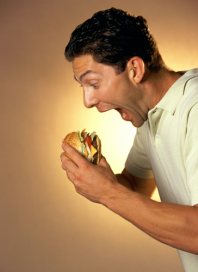
If you’re like most people, eating out at a favorite chain food restaurant is a welcome convenience. It means not having to figure out what to cook for dinner and not having to slave over a hot kitchen stove. There’s nothing better than to be able to kick your feet up and let someone else serve you for a change, right?
Not necessarily.
Millions of people just like you suffer from chronic headaches, sinus problems, muscle aches, chronic fatigue, and gastrointestinal problems. To treat them naturally, they’ve adopted a healthy, organic, and maybe even gluten free diet. Unfortunately, eating out at chain food restaurants (and even some fancier gourmet places) may mean setting your health back quite a bit with just one meal.
Why?
Even though the food at the restaurant you frequent looks and tastes just like what you’d cook at home, there are hidden dangerous ingredients lurking on your plate. Ingredients that can reignite the chronic inflammation and immune problems you’ve been struggling to combat.
The Problem with Eating Out at Chain Food Restaurants
Fast food is one of the worst foods you can put into your body. That’s because, unlike a burger or fish sandwich you’d cook at home, the one wrapped up in that tissue paper isn’t what it pretends to be.
In order to bulk up the meat, chicken, and fish you eat, a combination of byproducts, additives, chemicals, and preservatives are mixed in, leaving you, the consumer, none the wiser. This process ensures the restaurant makes more profit for every pound they sell while you get the shorter end of the stick.
It’s not just fast food restaurants you have to watch out for. Even some five-star restaurants employ some pretty underhanded tactics to cut costs and keep you coming back for more. It may surprise you to learn that only one food supplier serves nearly 400,000 American eating establishments.
The company is called Sysco, and though some of the foods they offer are regionally-grown, many others are highly processed and filled with dangerous chemical additives. This means everything from a hot dog served from that “Roach Coach” that shows up at your office every morning to that prime cut of steak you indulge in at a fancy bistro could be coming from the exact same place!
Dangerous Ingredients in Restaurant Food
In the past 50 years, the way feed animals are being raised has changed dramatically and right under your nose. Nobody told you that the cows that used to graze in a field of grass or the pigs that slopped from troughs, or the chickens that pecked at organic grain have been taken out of the sunlight and shoved into the dark.
To cut costs and return more and more profit to factory farms, most animals are now being raised according to the Concentrated Animal Feeding Operation (CAFO). This means they are locked up, penned together, and fed a disgusting mixture of “feed” that both turns and ruins the stomach.
Some of these ingredients include:
- Meat – Yes, you read that correctly. Animals have been fed bits and pieces of meat from other dead animals for over twenty years. This is what caused the outbreak of mad cow disease in the mid-nineties.
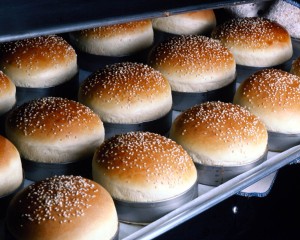
- Feathers and Hooves – Nothing is waste in a factory farm. Feathers from dead chickens, hooves from slaughtered pigs, as well as organ meat and intestines all find their way into the sickening soup of this animal feed.
- Animal Feces – Any meat that has not been certified organic has the potential to contain animal feces and ground up manure. Everything the animals drop on the floor just gets recycled back up into the feed.
- Plastic – Cows need roughage in order to digest the feed mixture they’re given so, instead of greens or fiber, plastic pellets are used because they’re the cheaper choice.
As if that wasn’t bad enough, the number of terrible ingredients in restaurant food increases during preparation and packaging.
These additives and preservatives include:
- Dimethyl Polysiloxane
A few years ago, it came out that McDonald’s chicken nuggets were more chemical than animal. That’s because only half of it is actual chicken; the rest of it is corn byproduct and a chemical called dimethyl polysiloxane designed to give the product a rubbery feel similar to that of Silly Putty.
- Food Dyes
Food dyes are a hidden cause of behavioral problems and learning difficulties in children as well as headaches and insomnia. Milkshakes, condiments, and dessert items are common culprits. Soda, in addition to containing high fructose corn syrup, also contains food dyes such as Red #40 and Yellow #5.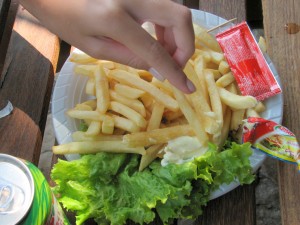
- MSG
MSG, short for monosodium glutamate, is a common flavor enhancer used in Asian dishes and condiments. MSG can cause serious allergic reaction in sensitive individuals and is a primary migraine headache trigger.
- PHIP
PHIP is short for 2-Amino-1-methyl-6-phenylimidazo[4,5-b]pyridine. It is a cancer-causing chemical commonly found in grilled chicken dishes.
- Pesticides
There are dangerous BT toxins lurking in your food on account of genetically modified farming. Corn and soy products are especially dangerous. The pesticides in GMO foods are known to cause immune system malfunction and severe gastrointestinal disease.
Cook Chain Restaurant Food at Home
Everybody wants to indulge in a nice juicy burger or a tasty pizza every once in the while and there’s nothing wrong with that. You can still serve those favorites to your kids by cooking them at home. Plan a family night where everybody gets into the kitchen and prepares a restaurant favorite at home.
Rent some movies and make a night of it!
To get started, think about the food you and your family usually eat when you go out. Look up the ingredients for a similar meal and write down the ingredients. On your next visit to the grocery store, pick up the organic and natural versions of these foods.
How to Stay Safe When Eating Restaurant Food 
To stay safe when dining out, choose organic, natural restaurants that serve high-quality ingredients. You can find restaurants by state by using DineGreen.com. If these restaurants aren’t in your area, call the restaurant of your choice and speak with the chef or owner.
Inquire about the additives and preservatives in their food and ask if their meat is grass or grain fed. Don’t worry about being too intrusive. A restaurant that really wants your business won’t mind telling you what’s in their food. You also want to ask about organic versus conventionally-grown produce.
Yes, eating out at a chain restaurant is a convenience but is it really worth the health of you and your family? Stay safe by eating at restaurants with certified organic ingredients and avoid fast food at all costs. Food cooked at home can be fast food, too. Burgers, fries, pizza, and hot dogs can all be made much healthier (and cheaper) when you cook them at home.






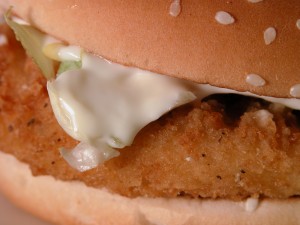
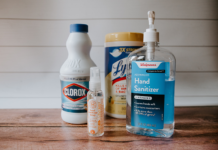
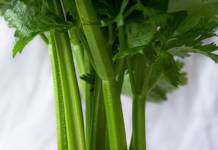

I live in London so any similar articles or info more specific to the UK would be much appreciated. Thank you for sharing x